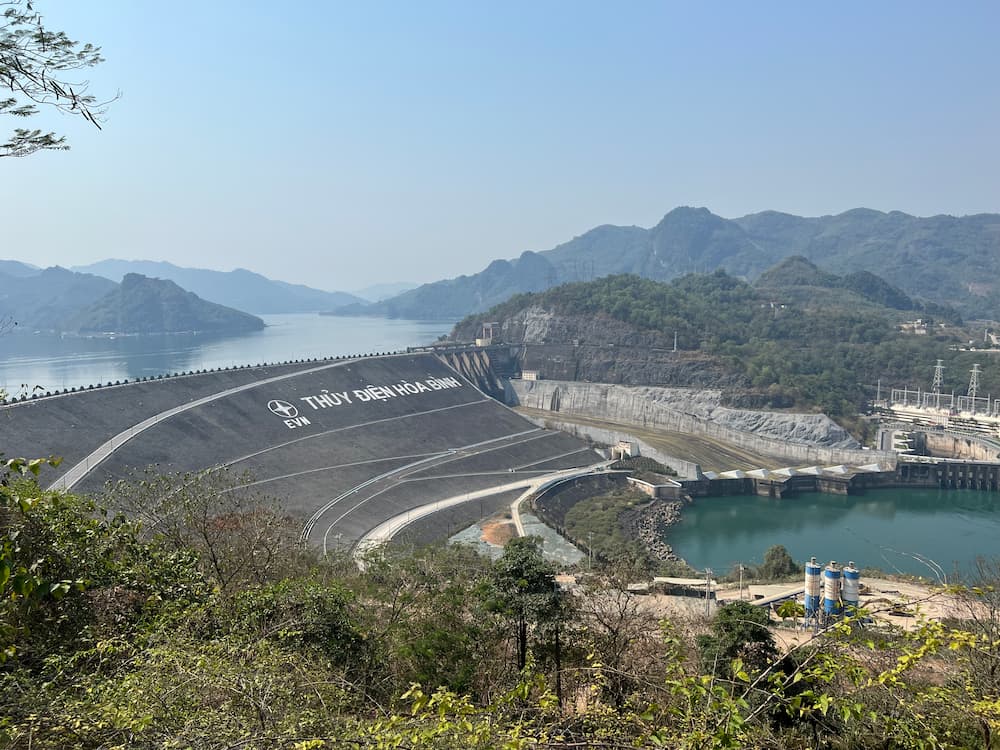
The Hoa Binh Hydropower Station in Vietnam. The country faced a severe drought this year, which drastically reduced hydropower output. (Photo: Wikimedia Commons)
As global geopolitical tensions rise, many businesses are gradually relocating their manufacturing facilities to Southeast Asia for risk diversification. Vietnam is committed to promoting energy transition, having pledged net-zero emissions by 2050 at COP26. Additionally, the country has signed the JETP and approved the National Power Development Plan (PDP8) to develop green energy and attract foreign investment for facility establishment.
Despite clear policy direction, the rising electricity demand in recent years, coupled with environmental disasters such as droughts affecting hydropower generation, has led Vietnam government to expand its use of coal-fired power generation. This has raised doubts about the country's commitment to achieving net-zero emissions and heightened concerns among businesses about energy shortages.
In response, PwC suggests that Vietnamese companies develop their own energy transition plans and establish corporate development strategies to address the challenges posed by global climate change.
Coal reliance hinders energy goals
The Vietnamese government continuously implements reforms and invests in driving the economy towards net zero. The net zero emission plan encompasses various sectors, especially high-carbon industries such as energy, transportation, agriculture, industrial processing, and construction, which play crucial roles in addressing climate issues.
However, PricewaterhouseCoopers (PwC) noted in a current report "Energy Transition in Viet Nam" that the pace of Vietnam's energy transition has accelerated, but numerous challenges remain.
Climate Action Tracker noted that Vietnam has made significant progress in deploying renewable energy in recent years, but the government's targets are still inadequate. While facing droughts, disrupted hydropower operations, and an over-reliance on coal-fired power, posing significant energy security risks.
There has been a significant increase in electricity consumption recently in Vietnam. To ensure stable power supply, power companies have heavily relied on coal-fired power generation. However, this approach contradicts the goal of energy transition. According to Vietnam Electricity Group (EVN), coal consumption has sharply increased in the first five months of this year, with coal-fired power plants accounting for an average of 59% of total electricity generation, and even exceeding 70% sometimes. By 2023, Vietnam's coal installed capacity will increase to 33%, which still represents a significant gap from the target of reducing it to 20% by 2030.
.jpeg)
Thai Binh 2 Thermal Power Plant. (Photo: thaibinh.gov.vn)
PwC offers three energy strategies
Stuart Livesey, Co-Chair of the Green Development Subcommittee at Eurocham Vietnam, stated that Vietnam’s energy transition still faces many obstacles, including infrastructure limitations, development mechanisms, and issues on the enterprise side.
Particularly at the enterprise level, each company has its model, with varied production processes and layouts. It is crucial to accurately calculate energy demand and sources. Based on this energy data, companies can utilize management platforms to optimize the supply and consumption of existing energy sources, then gradually seek out other new energy sources, finding suitable solutions according to the company's current situation, short- and long-term goals, and development strategies as well.
PwC suggests that Vietnamese enterprises develop energy transition plans, not only to address the risks of climate change but also to establish corporate sustainable development goals. It proposes three specific actions:
- Draw up baselines and assess: Identify the company's and supply chain's current energy consumption baselines and assess potential opportunities for energy savings and efficiency improvements. Based on these assessments, develop comprehensive models for achieving decarbonization of existing business.
- Identify priority business and plan: Evaluate the current status and capabilities of the company, then set clear goals based on the decarbonization path; formulate an operating strategy that frames energy transition opportunities as specific business prospects and plan the priority of actions.
- Implementation and transformation: Refine the electricity procurement processes according to the energy transition strategy. Build partnerships and secure financial support to facilitate future transformation efforts. Establish evaluation frameworks for major suppliers to identify and capitalize on potential energy opportunities.
As net-zero becomes a policy goal for many countries, the energy transition creates immense opportunities for the new energy industry. However, it also comes with risks associated with the transition. Instead of passively waiting, enterprises should proactively integrate energy transition into their corporate development strategies. Only by doing so can businesses move towards sustainable operations.



